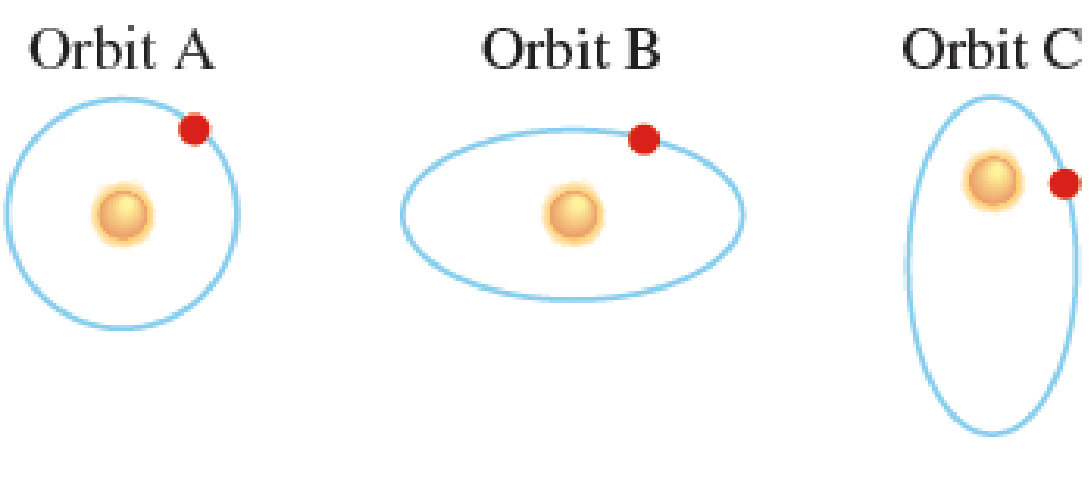Gas, large in size, longer orbit times
Solar System
Radiometric dating is used to find the ______ of an object.
age
The shape of all orbits
Ellipse

Saturn
Composition of inner planets
Scientists think this burst of energy emitted by the Sun is responsible for the inner planets being rocky and small and the outer planets being large and gas.
Solar Winds
What is the name of the isotope that the unstable isotope decays into?
daughter isotope
According to Kepler's Second Law, a planet moves fastest when it is...
closer to the Sun
The 8th and furthest planet from the Sun.
Neptune
If an object is non-spherical in shape and takes around 800 Earth days to orbit the Sun it is probably part of the __________.
asteroid belt
Craters are evidence for which aspect of Nebular Theory?
Accretion
What percentage of the parent isotope remains if the object has gone through 2 half lives?

25%
Three possible orbits are shown below. Which ones are correct according to Kepler's First Law?
B and C
This planet takes around 225 Earth days to complete one orbit the Sun.
Venus
List some characteristics of Kuiper Belt objects
Icy/rocky, extremely long orbit times, cold
How many years is 1 half life of Strontium 90?

25 years
According to Kepler's 3rd Law, which planet takes the fourth shortest time to complete one orbit around the Sun?
Mars
This small planet is heavily cratered.

Mercury
If an object takes 300 days to orbit the Sun, it's probably part of which group?
inner planets
Which inner planet has very few craters? And why is this the case?
Earth, because it has processes that can "erase" craters. (Volcanoes, plate tectonics, water, erosion)
How old is an object if it contains 6.25% of the parent isotope strontium 90?

100 years old
Place these planets in order from shortest orbit time to longest orbit time.
Mars, Earth, Saturn, Jupiter
Earth, Mars, Jupiter, Saturn
This planet has the coldest average surface temperature
Neptune